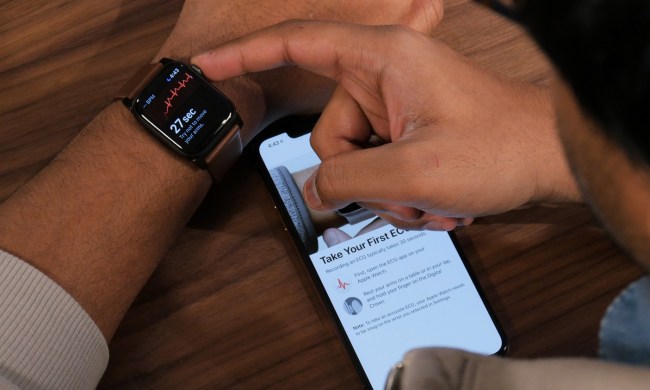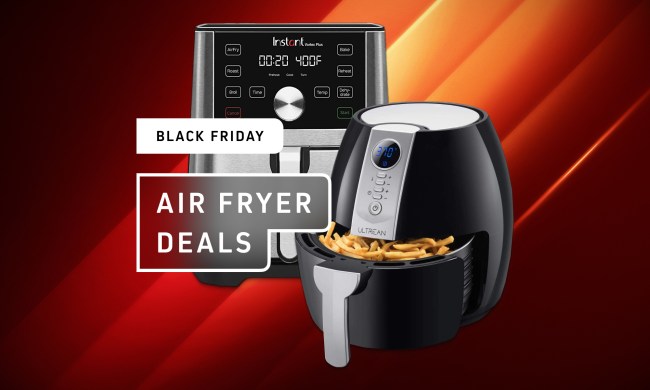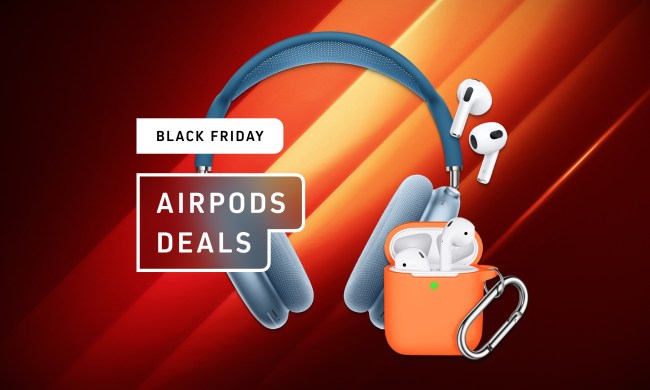Whether you strive to become an ace athlete, crack craftsman, or professional pilot, there’s wealth of tech out there promising to help you reach your goals. But do these devices deliver? We figured there’s no better way to find out than to put a pro in a room full of gadgets made for their field, set them loose, and watch what happens.
Welcome to Digital Trends’ new series, Pro:Test.
For our first installment, we reached out to Beastmode himself, Marshawn Lynch, to find out whether fitness watches can really coach a gym rat to full-on pro athlete status. Except, Beastmode doesn’t work out in the conventional sense. So, Marshawn did us a solid and called up his cousin, Defensive Rookie of the Year and Kansas City Chiefs Cornerback Marcus Peters, to strap on three top-rated fitness watches and give them the workout of a lifetime.
The Gear
We chose three distinctly different fitness watches for our test, each with its own set of features, metrics, and feedback style.
Fitbit Blaze ($200)

The Blaze looks more like a watch than our other two wearables, and provides an optical heart rate monitor, step counter, and advanced motion sensors. It will automatically detect various sorts of exercise activities, from running to cycling, and tennis to basketball — no button pushing required. While the Blaze doesn’t have a built-in GPS tracker, it can coordinate with a smartphone to collect positioning data, then collate that information with all the other metrics it gathers. What really sets the Fitbit Blaze apart from its competitors is its remarkably user-friendly mobile app, which has an intuitive and informative dashboard underscored by separate screens that provide deeper analytics, including sleep monitoring. The battery is rated to last five days.
The Blaze also offers several smartwatch features, including on-screen messaging, calendar notifications and caller notification.
On the down side, the Blaze can’t provide as accurate feedback without a connected smartphone, which makes some activities — like swimming — a no-go. Also, the Blaze is water resistant, but not waterproof.
Garmin Vivoactive HR ($250)

Perhaps the most likely choice for advanced athletes, the Vivoactive HR offers built-in GPS, an optical heart-rate monitor, and step counter. The vast array of sports and activities it can monitor set it apart from competitors. Along with the usual running and cycling, you’ll find golf, skiing, swimming, and even rowing. The watch provides an exceptional amount of data, freeing it from the need of a smartphone, but with a smartphone or PC, Garmin can provide much deeper historical data and tie it all together. The Vivoactive HR’s battery life is also the best of our bunch here, topping out at up to eight days in activity mode, and 13 hours with GPS tracking enabled.
On the down side, we found the accompanying app a little confusing, and not as rich with data as we’d hoped.
Polar A360 ($200)

Easily the simplest of the trio, the Polar A360 lacks GPS capability entirely. As such, it must rely entirely on motion data and heart-rate monitoring. On the other hand, the A360 is completely waterproof, and is meant to automatically detect various exercise types. It also tracks sleep and will notify you if you have been sedentary for too long a period. Of the three, the Polar A360’s on-screen interface is the least intimidating and simplest to navigate. Unlike the other two watches in our battle, the A360 doesn’t offer any smartwatch features.
The results
You’ll have to watch our video to find out which of the fitness watches Marcus and Marshawn liked best, but truth be told, none of them were able to track Marcus’ hard-core workout very well. Some of his steps were too fast and furious to count, and because Marcus’ heart rate remained so steady, his calorie burn metrics were likely skewed as well. It would have helped, too, if the workout covered some sort of distance so GPS could have come into play.
Ultimately, while the Fitbit Blaze was the most practical and fun to use of the three, the Garmin Vivoactive HR was probably the most accurate, and would be the best choice for most advanced athletes. With that said, both the Fitbit Blaze and Polar A360 will be much more desirable for novice athletes and adventurers.



